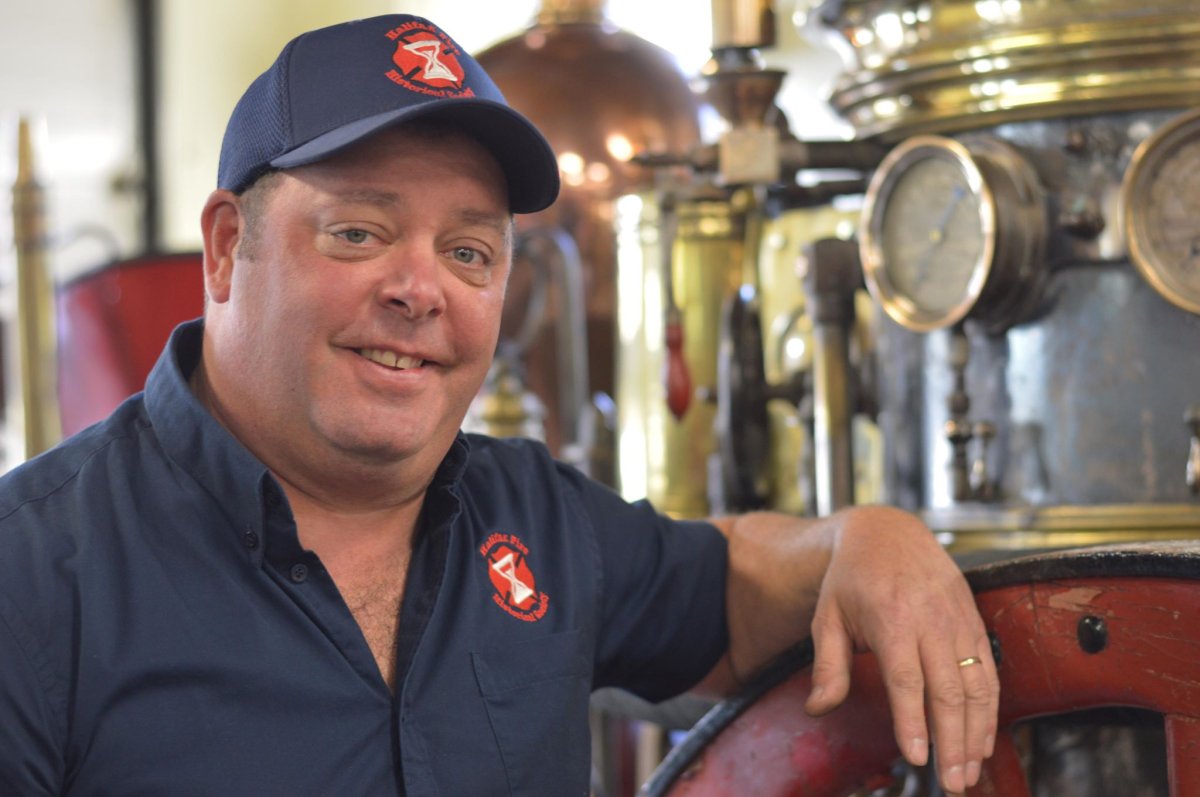A 141-year-old piece of Nova Scotia firefighting history has returned to Halifax, where it will be housed, protected and someday restored.

The Lulan, a horse-drawn steamer created in 1877 by the Manchester Locomotive Works in New Hampshire, sat inside Halifax’s Fire Station 2 on Thursday.
Its red paint and metal bearings may be worn, but Jeff Brown of the Halifax Fire Historical Society, and the mastermind of the vehicles move to Halifax, can’t help but speak about the vehicle with pride.
He says the vehicle’s history — despite it being the property of New Glasgow, N.S. — is deeply intertwined with Halifax’s own past.
READ MORE: Halifax Fire remembers comrades lost in the Halifax Explosion
A Halifax connection
On the morning of Dec. 6, 1917, the cargo ships Imo and Mont Blanc collided in the harbour, starting a fire on Mont Blanc. Mont Blanc was full of explosives — one-sixth the destructive force of the early atomic bombs.
When Mont Blanc erupted, it wiped out Halifax’s north end as well as a Mi’kmaq village across the harbour, leading to approximately 2,000 deaths and an estimated 9,000 wounded.

Get daily National news
“In the days that followed, New Glasgow put this steamer on a railcar and set it down to Halifax to help out,” Brown said.
“Because of the explosion, there were fires burning all over the north end and we needed all of the help we could find.”
Brown said that his organization is working to verify whether it was pressed into service when it arrived in Halifax.
The steamer weighs in at more than 5,000 pounds and was traditionally drawn by two horses.
Back in 1877, these steamers would be used much like modern day firetrucks, pumping out water at a high volume very quickly.
The Lulan functions with a boiler and a pressure tank. Fire services would be at the ready with a supply of hot coals at their stations to react when they were needed.
Steamers like the Lulan would then draw in water from a static source such as a fire hydrant and pump the water out at nearly 600 gallons a minute.
The Lulan steamer remains the property of New Glasgow, with the vehicle now on temporary loan to Halifax.
Limited space forced Chief Dort of the New Glasgow Fire Department to contact Halifax Regional Fire and Emergency to see if they could lend a hand.
“They realized they really didn’t have the space to store it and maintain it. They felt that it might be a better fit down here with what we’re growing and doing in the future,” Brown said, referencing to his organization’s goal of preserving the firefighting history of Nova Scotia.
“They thought we should have it.”
It cost the town of New Glasgow $3,827.58 to the purchase the vehicle in 1877 but for the firefighters in Halifax, its historical connection to the municipality may be priceless.















Comments